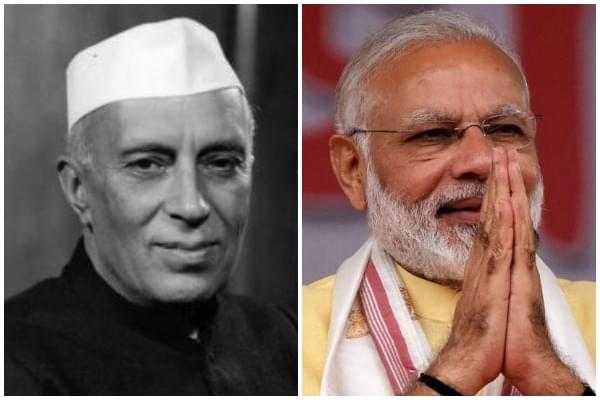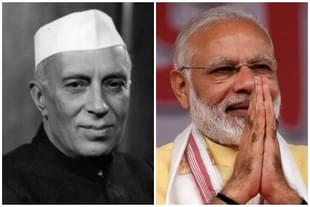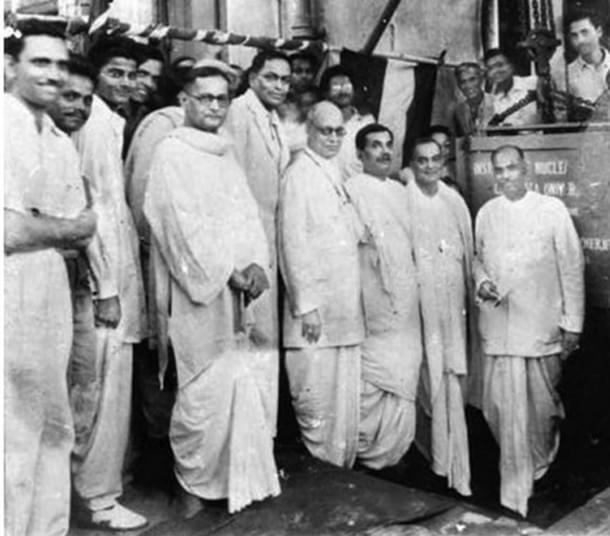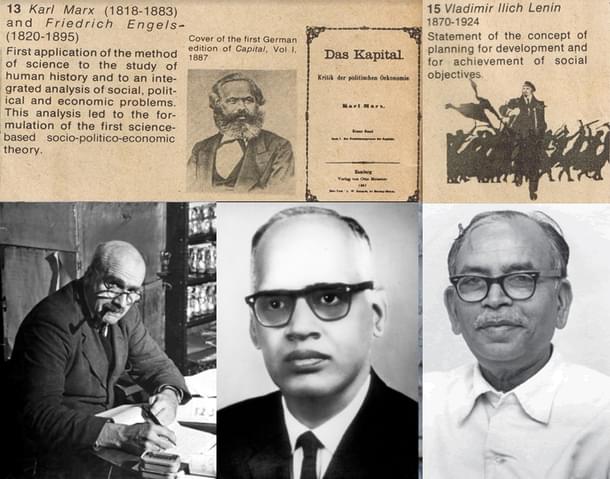Ideas
Nehru-Modi: A Comparison Of Scientific Legacies
Aravindan Neelakandan
Apr 24, 2018, 04:53 PM | Updated 04:53 PM IST
Save & read from anywhere!
Bookmark stories for easy access on any device or the Swarajya app.


Recently, a Pakistani writer lauded the late Jawaharlal Nehru in an article for keeping India 'secular' and 'scientific'. Had Narendra Modi, instead of Nehru, been the first prime minister of India, the country would have become the land of crackpot science, alleges Pervez Hoodbhoy, who teaches physics in Lahore and Islamabad. And the article has gone viral, especially with the so-called secular brigade in India.
The article first takes up the issue of attacks on Nehru made in some internet circles. These are obscene attacks with bizarre conspiracy theories. Then, Hoodbhoy goes on to say that Nehru is being systematically eliminated from Indian school curricula under the Bharatiya Janata Party (BJP) rule. Here, he equates Nehru with Mohammed Ali Jinnah, and General Zia-ul-Haq’s fanatical reign with that of the present Modi government. While Hoodbhoy is totally uncritical, and where needed, strategically silent about the secular credentials of Jinnah, with respect to Nehru, he spells out how contemporary Pakistan perceived him. And, even then, Nehru's India does not pass his scrutiny. But, it is only better than Modi's India:
Of course, here in Pakistan we never for a moment believed Nehru when he declared India’s intent to become a pluralistic, liberal, syncretic state whose strength would lie in diversity. For us, all these were just fine words justifying Hindu majoritarianism under the cloak of democracy. Only now that the BJP controls India with a viciously communal agenda have some Pakistanis realised what loss of secularism – even imperfect secularism – actually means.
Then he goes for the jugular. Where would India be had Modi, not Nehru, been India’s prime minister in 1947:
Instead of being noted for its exceptional space programme (Mangalyaan!) and brilliant string theorists (Ashoke Sen!), India would have become a garbage dump for every kind of crackpot science. Medical research would have concentrated on medicines made from cow urine and cow dung, the celibacy of peacocks would be under intense scrutiny, astrology would be taught in place of astronomy, and instead of teaching actual mathematics there would be Vedic mathematics. As in Pakistan, Darwinian evolution would be considered heretical and destructive of religious faith.
At the outset, it looks right. However, a fact check into the way scientific establishment actually evolved in India tells us a different story. One cannot deny here the fact that there are loose cannons and loud mouths in Modi's cabinet who suffer from comprehensive inability to understand science as well as the real heritage of India. But in a way, they too, are a result of Nehruvian India.
In reality, Nehru, despite his outwardly professed admiration for 'scientific temper' was unscientific at two levels. He himself practised many of that in his private life which he deplored in his public discourse.
Letters to his Sister, edited by Krishna Hutheesing, is a collection of letters Nehru had written to his sister. In this collection, the letter numbered 74 was written on 29 August 1944 by Nehru to his daughter Indira to make a “proper horoscope” of his grandson (Rajiv) by “a competent person”.
Then, the private secretary to the prime minister sent a note to the editor of Astrological Magazine, Bengaluru. It stated: “the Prime Minister has asked me to write to you that, so far as he knows, the time of his birth was 11.30 p.m. on November (sic), 1889”.
Durga Das was a freedom fighter and a journalist. His book, India From Curzon To Nehru and After comes with a foreword by Dr Zakir Hussain, former president of India. In this, Das narrates how before the Chinese aggression, Nehru allowed Gulzari Lal Nanda to persuade himself to show his horoscope to an astrologer, who warned Nehru of an imminent Chinese attack. Nehru flew into a rage. Das writes:
Not many weeks after the Chinese launched their aggression, Nehru was in a mood to listen to astrologer. But the pundit’s words were hardly comforting. Nehru’s life span was over, he pronounced. Only puja (ritual worship) could prolong it. What followed was shrouded in the utmost secrecy.
Every evening after the rituals, Brahmin priests came to the prime minister’s residence and placed an auspicious tilak mark on his forehead.
In other words, Nehru started the hypocrisy that we see today rampant in India –speaking about ‘scientific temper’ and ‘rationalism’ outside and going to astrologers and tantriks in private.
Nehru’s supporters also claim repeatedly that the phrase ‘scientific term’ was formulated by him. Hoodbhoy also repeats the same and calls it "a quintessential Nehruvian notion formulated during his years in prison”. But it was a term coined by Bertrand Russell in as early as 1922. As biographer of Nehru, Sankar Ghose, points out, it was Russell’s influence on Nehru that made him think this way:
In Europe Jawaharlal read books by Bertrand Russell and others. Russell’s rationalism left an enduring impression on him. He felt that a study of books like those of Russell could help greatly in spreading the scientific and rational temper and in subduing religion which otherwise ‘will kill the country’. Rational and scientific temper and a non-dogmatic approach was necessary even for the spread of Western industrialization without which poverty could not be eradicated.Jawaharlal Nehru, a Biography, Allied Publishers, 1993
At another level, Nehru was having an unscientific admiration for the achievements of the Marxist states. He followed the socialist method of planning and implemented a caricature of Stalinist five-year plans. His approach to science actually alienated scientists and people, and created centralised islands of technological expertise.
The immensity of tragedy will be realised if we consider the fact that Nehru started with so many personalities in science that would have made any nation in Asia envious. Even after Acharya J C Bose's passing away, we had eminent scientists like K S Krishnan, C V Raman, Sathyen Bose, Meghnad Saha, G N Ramachandran, Alladi Ramakrishnan and so on. However, as the Nehruvian era developed we see that many of the scientists became more and more disillusioned and institutions in India turned more state-dependent. Political connections of the scientists rather than their achievements in science decided their national role.
C V Raman, the famous physicist, emphasised the necessity to reach out to the individual and keep out the government ‘state-ism’ of the Soviet kind.
Uma Parameswaran, a critical biographer of the physicist, explains Raman’s critique of Nehru:
Soon the national laboratories became what the Indian Institute of Science had been before Raman shook it up – a place where sinecure scientists did little by way of innovation or discovery. This riled Raman no end. He held Nehru responsible. He felt Nehru had allowed Indian science to be hijacked by self-serving people who were given control of policy making. ... Raman faulted Nehru for not having the knowledge, the intuition, what you will, to find the right people for the advancement of Indian science.

Physicist Meghnad Saha had a leftist orientation. In fact, he was an early mentor of Nehru when it came to science. Nevertheless, Saha was also a great institution-builder. When he wanted to build the science infrastructure for the nation there were obstacles created by the pre-Independence bureaucracy in the then Calcutta University senate. When Saha sought Nehru's help, the latter contacted Dr Syama Prasad Mookerjee. It was through the staunch support of Dr Mookerjee that those obstacles were removed. Later, Saha would be so disappointed with Nehru government with respect to its record ‘between 1947 and 1951 on education, industrialisation, health, river valley development, and planning,’ that he himself decided to become a candidate for parliamentary election.

Nehru, in 1950, had created problems for Saha’s institute, foundation stone of which was laid by Dr Mookerjee. It was opened by Joliot-Curie, who was with French Atomic Commission and also a member of Communist Party. It was Dr Mookerjee, who despite the personal Left leaning of Saha, supported the institute. Robert S Anderson, an authority on the history of Indian nuclear technology, writes:
The draft constitution was debated early in 1951 in the university Senate, where Saha was supported again by Syama Prasad Mookerjee and by S N Bannerjee, the vice-chancellor. Mookerjee had, in 1941, persuaded the Senate to accept the Tata Trust seed grant for Saha’s cyclotron and laid the foundation for his institute in 1948. The Senate opposed the construction of a semi-autonomous institution within the grounds of the Science College of the university, land which it had fought hard for, but Mookerjee helped Saha overcome this opposition although they each supported opposing political parties. The university wanted full control of the land, governance, and admissions/employment in the institute, asserting the right of the city and West Bengal against the central government. Mookerjee’s constitutional compromise between local and national forces allowed the institute to begin functioning as an all-India institution in July 1951.Robert S Anderson, ‘Nucleus and Nation: Scientists, International Networks and Power in India’, p.137
So, here one can see the difference in approach between Pandit Nehru and Dr Mookerjee. Dr Mookerjee, who was the founder of the party to which the present Prime Minister Narendra Modi belongs, could raise above partisan politics and assist in building institutions to promote science. If only one could say the same thing about Jawaharlal Nehru. Unfortunately, the experiences of two of the greatest physicists of his times, Raman and Saha, prevent us from saying that.
Even J B S Haldane, polymath biologist, who was Marxist in his ideological leanings, was disenchanted by the dominance of bureaucracy and politicians in the scientific establishment in India during Nehru's time, and criticised it:
The old caste system had this merit, that the richest merchant or Zamindar could not buy the status of Brahmin for his son, even if the son was learned and pious. Whatever the defects of that system – and I think that they were and are grievous – it was not subservient to wealth. The new caste system which the university administrative authorities, with the connivance of many government officials, are trying with some success to impose upon India, has no such excuse. I hope that steps may be taken to break it before it exercises the same paralytic effect on India as the old one did in the past. ... In India today, the unworthy successors of Durvasa and Vishvamitra actually invite governors, vice-chancellors, and the like, to address them. This may be a relic of British rule. If so, it is a regrettable one.‘What ails Indian Science’
However, what Nehru achieved was that the 'scientific temper' soon devolved into party line propaganda. It was sneaked into Indian Constitution during the Emergency. And, at the same time the 'Method of Science Experiment' which was supposed to spread 'scientific temper' showed more interest in parading Lenin and Karl Marx as examples of 'scientific temper' rather than discuss Indic systems of knowledge and their engagement with science.
So, can one imagine a method of science experiment panel that does not mention natural selection, Karl Popper or Thomas Kuhn but shows Marx and Lenin? In North Korea or Maoist China, one may say. But lo and behold – it was done in democratic India all in the name of ‘scientific temper’. At the same time, it should be noted that there were people, who were interested in studying the engagement of science with Indic knowledge systems – like J B S Haldane and G N Ramachandran. However, they were individual islands. Institutional support was given to Nehruvian party line of scientific temper as something non-Indian and Marxist.

It was this alienation along with peddling of pseudo-scientific visions of grandiose by charlatan phenomena which include serials like ‘ancient aliens’ that makes people talk nonsense like Vedic airplanes. The primary cause for this, namely cultural illiteracy and national alienation from science is essentially the creation of Nehruvian system.
As against this, let us see how Modi continues the legacy of Dr Mookerjee. His Solar Alliance is an eco-technological alliance against the uni-world dominance and is against the anti-science climate change denial brigade, which has gained power under the present US President. This Solar Alliance by Modi is more scientific and more socially relevant and holistic than the farce called Non-Aligned Movement created by Nehru, which soon became ‘I love USSR’ club. Or look at the way Modi is using technology to unite people across borders. The SAARC satellite he gave to the South Asian nations is a techno-diplomatic positive approach that unites humanity across borders through applied science.
So, ask not how India would have been had Modi been India’s first prime minister. If the actions of Dr Syama Prasad Mookerjee is any indicator along with what Modi does, then the answer is not very flattering for Pandit Jawaharlal Nehru.
Aravindan is a contributing editor at Swarajya.





